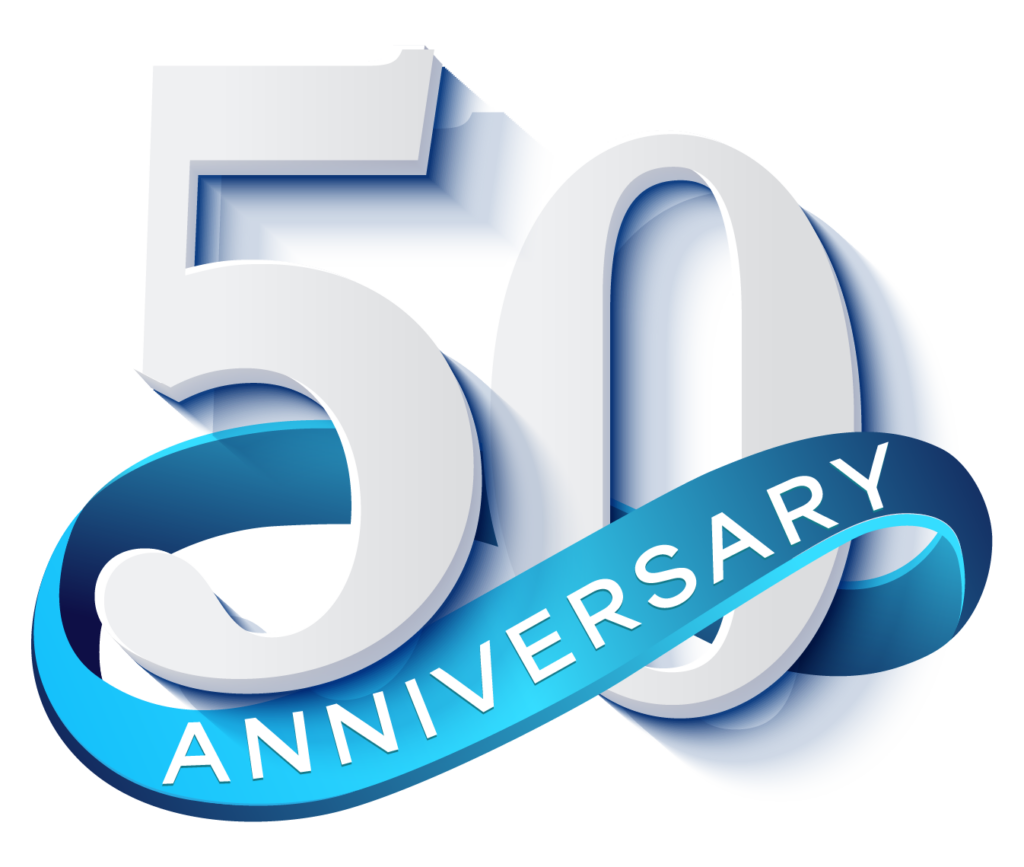Within the intricate nature of organizational dynamics, a dysfunctional team stands out like a jagged tear in an otherwise polished business environment. Dysfunctional teams, characterized by poor communication, lack of synergy, and reduced productivity, pose a substantial threat to an organization’s success. They become breeding grounds for conflict and their performance consistently falls short of expectations.
Addressing team dysfunction is not a luxury but a necessity. It directly impacts an organization’s bottom line.
According to a Gallup study, disengaged employees – often a result of dysfunctional teams – cost the global economy up to $8.8 trillion annually in lost productivity. The key to addressing dysfunction lies in decoding the traits that make a team effective and recognizing what makes a dysfunctional team.
In this post, we will delve into the multifaceted world of effective teams, decipher what makes a team dysfunctional, and discuss strategies for overcoming these challenges.
Types of Team Dysfunctions
To understand how to build effective teams, we must first dissect the various types of dysfunction that can plague them. Each type presents unique challenges and requires tailored solutions.
Lack of Communication
Effective communication is the lifeblood of any team. When it breaks down, dysfunction creeps in. Effective teams excel in both horizontal and vertical communication. Horizontal communication fosters inter-team communication and collaboration among team members, while vertical communication ensures alignment with organizational goals.
A study titled Capitalizing on Effective Communication: Communication ROI Study Report found that organizations with effective communication practices enjoy 47% higher total returns to shareholders over a five-year period compared to firms with poor communication.
Therefore, teams and organizations should prioritize and invest in nurturing robust communication channels. By doing so, they can pave the way for improved collaboration, increased productivity, and ultimately, greater profitability.
To foster better communication within teams, organizations and leaders should establish clear communication standards and promote an understanding of individual communication styles and preferences. Recognize that every team member may have a unique way of expressing themselves and processing information.
Personalysis Assessment can be invaluable in identifying these communication styles, needs, and preferences. By leveraging such insights, leaders and team members can tailor their communication strategies to accommodate these differences, reducing misunderstandings and promoting effective dialogue.
Absence of Clear Goals
Goals provide direction and purpose. Without clear, measurable objectives, a team can easily lose focus and momentum. Effective teams set SMART goals (Specific, Measurable, Achievable, Relevant, Time-bound) that guide their efforts and drive results.
Leaders should actively engage team members in the goal-setting process to promote a sense of ownership and dedication. It’s vital that every team member comprehends how their daily actions contribute to the team’s overarching objectives, fostering alignment and motivation. Regular progress updates from leaders help reinforce the link between individual contributions and the team’s overall success, resulting in a focused and motivated team.
Research by Dr. Gail Matthews at Dominican University in California shows that people who write down their goals and share them with a friend are 33% more likely to achieve them. This underscores the importance of setting clear goals within teams as it helps with accountability and commitment and instills a sense of ownership.
Ineffective Leadership
Leadership can make or break a team. Authoritarian leadership stifles creativity and teamwork, while collaborative leadership empowers team members to excel. Leading by example, fostering a supportive environment, and empowering team members are hallmarks of effective leadership.
The impact of leadership styles on teams has been extensively studied, and one notable article published in the Harvard Business Review sheds light on the tangible effects of leadership on employees and teams. This study found that employees who perceive their leaders as trustworthy are not only more productive but also more committed to their jobs and more likely to remain with their organizations.
In essence, effective leadership is not just a theoretical concept but a concrete reality that significantly influences the performance and well-being of teams and individuals within them.
To embark on a journey of leadership transformation and refinement, explore the Personalysis Executive Intensive Program. This program helps leaders understand the importance and impact of relationships and understanding people’s behaviors on their success as a leader.
Unequal Contribution
Ineffective teams often suffer from unequal participation, with some members carrying the majority of the workload while others coast along. Recognizing individual strengths, encouraging participation from all members, and addressing free riders are essential for equitable contribution.
Recognizing Dysfunction
Identifying what makes a team dysfunctional is the first step in addressing it. Let’s explore ways to recognize the signs of dysfunction within a team.
Monitoring Team Performance
Monitoring team performance is a crucial aspect of recognizing what makes a team dysfunctional. When performance metrics consistently fall short of expectations, it can be a sign that something is amiss. Frequently missed deadlines, increased error rates, or declining productivity may indicate underlying issues.
Additionally, tracking key performance indicators (KPIs) and comparing them against established benchmarks can reveal performance gaps that need attention. Leaders and team members should keep a vigilant eye on these metrics to identify dysfunction early and take corrective action.
Gathering Feedback
Feedback is a valuable tool for uncovering what makes a team dysfunctional. Encouraging open and honest feedback from team members provides insights into their experiences and perceptions.
Conducting regular feedback sessions or surveys can help uncover issues such as communication breakdowns, conflicts, or concerns about leadership. It’s essential to create a safe space where team members feel comfortable sharing their thoughts and concerns without fear of reprisal, known as psychological safety. Constructive feedback serves as a valuable diagnostic tool for recognizing what makes a dysfunctional team and taking steps to address it.
Identifying Patterns of Conflict
Patterns of conflict can be a glaring sign of dysfunction within a team. When conflicts arise repeatedly, or specific issues trigger consistent disputes among team members, it’s essential to recognize and address these patterns. These conflicts may revolve around roles and responsibilities, decision-making processes, or interpersonal dynamics.
Identifying the recurring themes or triggers behind conflicts can shed light on what makes a dysfunctional team. Leaders and team members should be vigilant in recognizing and documenting these patterns to facilitate targeted interventions and resolutions.
Root Causes of Dysfunction
Dysfunction doesn’t appear out of thin air. It has root causes that need to be identified and addressed. Let’s delve into these underlying issues.
Inadequate Communication Channels
Effective communication requires the right channels. Inadequate channels hinder the flow of information, leading to misunderstandings and missed opportunities. Implementing robust communication tools is crucial.
According to a McKinsey report, organizations that invest in digital communication tools and collaboration platforms can improve productivity by up to 25%. This underscores the tangible benefits of addressing communication gaps.
By doing so, teams can streamline their communication processes, enhance information flow, and create an environment conducive to effective collaboration. These tools not only bridge geographical divides in today’s remote work landscape but also empower teams to stay connected and informed, ultimately driving productivity and success. From video conferencing platforms to project management tools, the options are diverse and tailored to meet the unique needs of different teams and organizations.
In addition to having the right communication channels, teams must also establish clear communication processes and norms. These processes define how information is shared, the frequency of updates, and the expectations for response times. Without such processes in place, even the best communication tools can lead to confusion and inefficiencies.
Teams should invest in not only the latest communication technologies but also in creating standardized procedures that guide how team members interact and share information. This combination of effective channels and well-defined processes can significantly enhance communication within a team, reducing misunderstandings and boosting productivity.
Ambiguous Roles and Responsibilities
When team members are unsure of their roles and responsibilities, chaos ensues. To address this issue effectively, you must start by implementing these actionable strategies:
- Clarifying Job Descriptions: Begin by revisiting and updating job descriptions within the team. Ensure that each team member understands their role and responsibilities, and how their contribution aligns with the team’s objectives. This clarity provides a solid foundation for effective teamwork.
- Cross-Training for Skill Enhancement: Encourage cross-training among team members to enhance their skill sets and gain a better understanding of each other’s roles. This not only fosters collaboration but also ensures that the team is prepared to handle unexpected challenges or absences more effectively.
- Delegating Tasks Effectively: Delegate tasks based on individual strengths and expertise. Ensure that team members are assigned responsibilities that align with their skill sets and interests. Effective delegation not only improves efficiency but also boosts morale as team members feel their contributions are valued.
- Regular Check-Ins: Implement regular check-ins or status meetings where team members can discuss their progress, challenges, and potential role adjustments. This ongoing communication ensures that roles and responsibilities remain aligned with the team’s evolving needs.
Micromanagement vs. Neglect
Leaders must strike a balance between micromanagement and neglect. Micromanagement stifles creativity, while neglect leaves team members feeling unsupported. Finding the middle ground is essential for team success. Effective leadership strikes a balance that encourages autonomy and accountability.
Effects of Dysfunction
The consequences of team dysfunction are far-reaching, affecting both the team and the organization as a whole.
Decreased Productivity and Efficiency
When dysfunction takes hold within a team, the immediate consequence is often a decline in productivity and efficiency. Dysfunctional teams frequently struggle to coordinate their efforts, resulting in wasted time and resources. Tasks that should be straightforward become needlessly complex, and decisions are delayed or poorly executed. This inefficiency not only hampers progress but also erodes the team’s capacity to meet deadlines and achieve goals efficiently.
Negative Impact on Team Morale
Dysfunction within a team can cast a long shadow over team morale and overall employee engagement. When team members experience ongoing communication breakdowns, unresolved conflicts, or a lack of clarity regarding their roles, frustration and disengagement can set in. This negative atmosphere can permeate the entire team, leading to a sense of disillusionment and disconnection. Low morale not only affects individual job satisfaction but also diminishes the team’s collective energy and motivation to perform at their best.
A study published in the Journal of Applied Psychology found that low team morale was a significant predictor of turnover intention among employees.
Missed Opportunities and Innovation
Ineffective teams often struggle to tap into their full creative potential. Dysfunction stifles the free flow of ideas and inhibits the exploration of innovative solutions. When team members are preoccupied with resolving internal conflicts or navigating unclear processes, they have less mental bandwidth to dedicate to creative problem-solving and innovation. As a result, opportunities for fresh insights and groundbreaking ideas are missed, and the team’s ability to adapt to changing circumstances is compromised.
High Employee Turnover
The toxic atmosphere within dysfunctional teams often leads to high employee turnover. This turnover comes at a significant cost to the organization.
According to the Society for Human Resource Management (SHRM), the cost of replacing an employee can be as much as 200% of their annual salary, taking into account recruiting, training, and lost productivity.
When team members become disillusioned with their work environment due to unresolved issues, ineffective leadership, or a lack of opportunities for meaningful contributions, they are more likely to seek employment elsewhere. High turnover rates not only disrupt team continuity but also incur recruitment and training costs for the organization. Moreover, the departure of experienced team members can lead to knowledge gaps and further exacerbate what makes a team dysfunctional.
Communication Breakdowns
Communication is not just about talking; it’s about the effective exchange of ideas and information. Let’s explore the nuances of communication within effective teams.
Importance of Active Listening
Active listening is a cornerstone of effective communication. It involves not just hearing words but understanding the underlying message. Misinterpretation and assumptions often arise from passive listening.
Research by Dr. Graham Bodie et al underscores the role of active listening in reducing misunderstandings and enhancing communication effectiveness with better emotional awareness.
Misinterpretation and Assumptions
In the absence of active listening, misinterpretations and assumptions can lead to confusion and conflict within the team. Clear, concise communication is vital to prevent misunderstandings. Addressing these issues can significantly reduce conflicts.
Role of Nonverbal Cues
Nonverbal cues, such as body language and facial expressions, play a significant role in communication. They can convey emotions and intentions that words alone cannot. Team members must be attuned to these cues to understand each other better. Recognizing and interpreting these cues is essential for effective team communication.
Setting Clear Goals
Clear goals are the guiding stars of effective teams. These goals are not merely arbitrary targets; they are the lifeblood of a team’s purpose and direction.
When crafting objectives, the SMART framework becomes an invaluable tool. SMART objectives are Specific, Measurable, Achievable, Relevant, and Time-bound. They provide the clarity and precision needed to ensure that everyone in the team comprehends the mission at hand. With SMART goals, the path forward becomes quantifiable, making progress tangible and success attainable.
But the effectiveness of these goals doesn’t stop there. It’s crucial that these objectives align seamlessly with the team’s overarching mission. This alignment is the secret sauce that infuses synergy into the team’s efforts. When individual goals harmoniously converge with the team’s grander vision, a powerful sense of purpose emerges. Each team member becomes not just a cog in the machine but a vital contributor to a shared destiny. This unity of purpose fuels motivation, collaboration, and a collective commitment to success.
Equitable Contribution
Every team member has unique strengths to offer. Recognizing and harnessing these strengths is vital for equitable contribution.
Recognizing Individual Strengths
Effective teams and decisive leaders acknowledge and leverage the diverse strengths of their members. This leads to a well-rounded and capable team.
A Gallup study on employee engagement found that when employees have the opportunity to focus on their strengths every day, they are six times more likely to be engaged in their jobs. This surge in engagement translates into higher productivity, job satisfaction, and overall team success.
Now, let’s explore two actionable strategies that leaders can employ to recognize and leverage individual strengths effectively:
1. Utilize Personalysis
The Personalysis science-based assessment tool is a potent resource for leaders seeking to understand the unique personality traits and strengths of each team member. By providing valuable insights into communication styles, decision-making preferences, and human behaviors, Personalysis empowers leaders to tailor their leadership approaches to individual needs. It helps identify the distinct strengths that team members bring to the table and offers guidance on how to leverage these strengths for optimal team performance.
2. Regular Strengths Assessment and Feedback
Implement regular strengths assessments within your team. Encourage team members to self-assess and share their perceived strengths. Additionally, solicit feedback from colleagues to gain a holistic perspective. This practice not only enhances self-awareness but also creates a culture of appreciation for individual strengths. As a leader, you can then strategically align these strengths with specific tasks and projects, ensuring that each team member contributes where they excel.
Encouraging Participation from All Members
Inclusive teams ensure that every member’s voice is heard. Encouraging participation from introverted or less assertive members fosters diversity of thought.
Research by Li et al, published in the Organizational Psychology Journal, shows that inclusive leadership positively influences team creativity and performance while establishing psychological safety.
To implement inclusive leadership, we recommend the following:
1. Create an Open and Respectful Environment
Leaders must set the tone for inclusivity by creating an open and respectful work environment. Encourage team members to express their ideas, opinions, and concerns freely. Make it clear that every contribution is valued and respected, regardless of its source.
2. Foster Diverse Teams
Actively promote diversity within your team. A diverse team naturally brings together a variety of perspectives and experiences. Encourage collaboration among team members from different backgrounds and disciplines. This diversity of thought can lead to innovative solutions and richer problem-solving.
3. Provide Equal Opportunities for Input
In meetings and discussions, ensure that every team member has an opportunity to speak. This might involve setting ground rules for participation, rotating speaking orders, or using digital collaboration tools that allow for anonymous input. By actively seeking input from all members, you can tap into the full spectrum of team expertise.
Handling Free Riders
Free riders are individuals who contribute little or nothing to the team’s efforts, relying on the hard work of others. They can undermine the sense of fairness and trust within a team. When team members perceive that some are not carrying their weight, it can lead to frustration, decreased morale, and even resentment. Additionally, free riders may negatively impact the team’s overall performance and its ability to achieve its goals.
To combat free-riding, implement a clear system of individual accountability and performance tracking. You can also create a transparent framework that tracks each team member’s contributions to projects and tasks. This could involve assigning specific roles and responsibilities to each team member and setting measurable targets. Then regularly review and discuss individual and collective progress during team meetings or performance evaluations.
Overcoming Dysfunction
Addressing what makes a team dysfunctional requires a multifaceted approach. Here are some strategies to overcome team dysfunction.
Open and Honest Communication
Leaders play a pivotal role in creating a positive work environment where team members feel safe to express their thoughts, concerns, and feedback openly. Effective communication entails active listening, transparency in sharing information, and a commitment to resolving issues collaboratively.
Leadership should set an example by demonstrating these communication practices, encouraging others to follow suit, and addressing communication breakdowns promptly. Through clear and candid communication, teams can identify and tackle dysfunction head-on, promoting understanding, trust, and problem-solving.
Team Building Activities
Leadership should also facilitate and participate in these activities, as they can help rebuild trust, improve collaboration, and foster positive interpersonal relationships among team members. Studies found that well-designed team-building activities can improve team cohesion and performance.
Whether it’s team-building workshops, off-site retreats, or regular team bonding exercises, these activities provide opportunities for team members to connect on a personal level and develop a stronger sense of cohesion. By engaging in these activities, leaders demonstrate their commitment to rebuilding a functional team and emphasize the importance of working together cohesively.
Conflict Resolution Strategies
Conflict is inevitable, but how it’s handled can make all the difference. Leadership should actively facilitate conflict resolution strategies, whether through mediation, coaching, or structured conflict resolution processes.
Leaders should emphasize the importance of addressing conflicts early before they escalate and become more challenging to resolve. By taking an active role in resolving conflicts, leaders demonstrate their commitment to creating a harmonious and productive team environment, fostering a culture of collaboration and mutual respect.
Overcoming Dysfunction and Fostering Success With Personalysis
Dysfunction can seep into the very fabric of a team, but it’s not a permanent stain. By recognizing the signs, addressing communication gaps, embracing inclusive leadership, and valuing individual strengths, dysfunction can be transformed into teamwork excellence.
It’s a journey that requires commitment and action, and with the right strategies, even the most dysfunctional teams can evolve into thriving, high-performing units.
Take the first step toward fostering a harmonious and empowered team by exploring how the Personalysis Executive Intensive Program can help you unlock your team’s full potential and create a thriving work environment.




